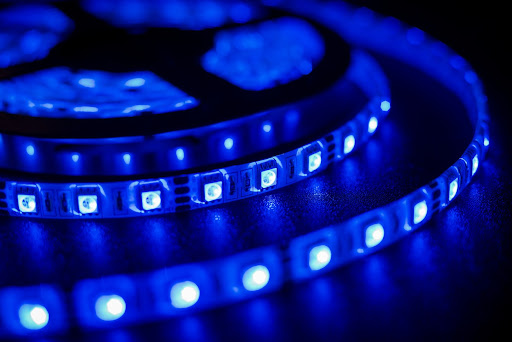Blog



Beyond Light Bulbs: 5 Non-Lighting Applications of LEDs
Light-emitting diodes (LEDs) have quickly become a household name when it comes to lighting and illumination. They’re overtaking traditional incandescent bulbs as the light bulb of choice for both home and commercial lighting, largely for their longevity, brightness, and low cost.
But LEDs have far more wide-ranging uses than just lighting. Here are 5 other applications of LEDs in consumer and scientific settings:
Indicators & Signs

Traffic signals hanging high above a street need to be clear and bright so drivers can see them well before they have to slow down or stop. And, when a driver brakes, their brake lights have to be easily visible to other drivers so they can all react accordingly.
Thanks to the widespread use of LEDs, these and other indicator and signalling lights use LED bulbs to give clear, long-lasting, bright light so the bulbs perform well without having to be changed frequently.
Additionally, the wide range of colors available for LEDs makes them ideal for situations where colored lights - such as the red, yellow, and green of traffic signals - is necessary.
Data Communication & Signaling

Because light can be used to transmit data and analog signals, LEDs can be used in systems used for communication and signaling.
Some assistive listening devices in theaters, for example, utilize arrays of infrared LEDs to send sound to individual users’ receivers. This helps the signals travel more quickly and reliably to the assistive listening devices, giving those guests a better overall experience.
LEDs also are used to send data over fiber optic cable, including the cable that makes up many internet connections.
Thanks to the ability of LEDs to cycle on and off millions of times per second, they can achieve an exceptionally high data bandwidth to help improve connectivity and access to information.
Biological Detection

The use of biological agents in conflict and between enemies has become an increasingly greater worry in recent decades. While many governments and militaries do all they can to prevent the use of these agents, technology for the rapid detection of these substances also is necessary.
To help with this, UV LEDs have been incorporated in light-induced fluorescence sensors such as TAC-BIO. This detector can detect aerosolized biological agents in as little as one minute, helping to protect the largest number of people possible.
In addition to its general detection capabilities, TAC-BIO can reliably tell the difference between substances that are threatening and those that are not threatening, meaning it only deploys a response when it’s most necessary.
Purification & Sanitization

Light is one of the most powerful antibacterials, and LEDs pack high-powered light.
Deep UV LEDs can purify water and air, as well as disinfect surfaces without using potentially harmful chemicals. This allows for faster, safer disinfection of even delicate surfaces such as those on and around electronics that could easily be damaged by the use of traditional cleaning sprays or wipes.
Sensors

All sensors require a light source, and many manufacturers opt for LEDs due to their brightness and long-lasting power.
There are a wide variety of ways that LEDs are used as sensors, including the remotes in gaming systems such as the Nintendo Wii, flatbed scanners, and pulse oximeters that measure patients’ oxygen saturation.
Optics Simulation Software Sales and Consulting
At CBS Europe, we have years of experience in optics and photonics simulation software sales, consulting, support, and training. We are the exclusive distributor for Photon Engineering's software products in Europe (excluding Spain, Portugal, and BeNeLux). Contact us today!
